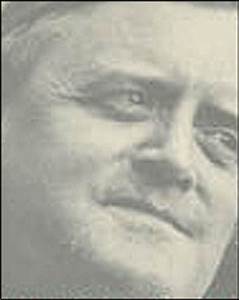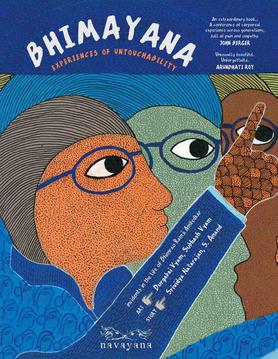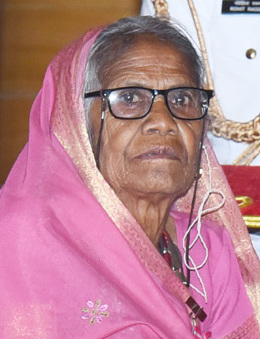
Madhya Pradesh is a state in central India. Its capital is Bhopal, and the largest city is Indore, with Gwalior, Jabalpur, Ujjain, Dewas, Sagar, Satna, and Rewa being the other major cities. Madhya Pradesh is the second largest Indian state by area and the fifth largest state by population with over 72 million residents. It borders the states of Uttar Pradesh to the northeast, Chhattisgarh to the east, Maharashtra to the south, Gujarat to the west, and Rajasthan to the northwest.

The Gondi (Gōṇḍī) or Gond people, who refer to themselves as "Koitur", are an ethnolinguistic group in India. Their native language, Gondi, belongs to the Dravidian family. They are spread over the states of Madhya Pradesh, Maharashtra, Chhattisgarh, Uttar Pradesh, Telangana, Andhra Pradesh, Bihar, and Odisha. They are listed as a Scheduled Tribe for the purpose of India's system of reservation.

Sagar is a city, municipal corporation and administrative headquarter in Sagar district of the state of Madhya Pradesh in central India. The city is situated on a spur of the Vindhya Range, 1,758 feet (536 m) above sea-level around 172 kilometres (107 mi) northeast of the state capital, Bhopal.

Sayed Haider Raza was an Indian painter who lived and worked in France for most of his career. Born on 22 February 1922 in Kakkaiya, Central Provinces, British India, Raza moved to France in 1950, marrying the French artist Janine Mongillat in 1959. Following her death from cancer in 2002, Raza returned to India in 2010, where he would live until his death on 28 July 2016.

Harry Verrier Holman Elwin was a British-born Indian anthropologist, ethnologist and tribal activist. He first abandoned the clergy, to work with Mahatma Gandhi and the Indian National Congress, then converted to Hinduism in 1935 after staying in a Gandhian ashram, and split with the nationalists over what he felt was an overhasty process of transformation and assimilation for the tribals. Verrier Elwin is best known for his early work with the Baigas and Gonds of Orissa and Madhya Pradesh in central India, and he married a 13 year old member of one of the communities he studied. He later also worked on the tribals of several North East Indian states especially North-East Frontier Agency (NEFA) and settled in Shillong, the hill capital of Meghalaya.
Jagdish Swaminathan popularly known as J. Swaminathan was an Indian artist, painter, poet and writer. He played a role in the establishment of the Bharat Bhawan, a multi-art complex in Bhopal, in 1982, and served as the director of its Roopankar Art Museum till 1990. He discovered Jangarh Singh Shyam, a Gond tribal artist of Madhya Pradesh. He was a member of the Communist Party of India.

Sachida Nagdev was an Indian painter based in central Indian town of Bhopal.
Jyotindra Jain is an Indian art historian and cultural historian, and museologist. A scholar on folk and ritual arts of India, he was the director of the National Crafts Museum, New Delhi, member secretary and professor, at Indira Gandhi National Centre for the Arts (IGNCA), New Delhi, and also professor at the School of Arts and Aesthetics at Jawaharlal Nehru University, Delhi. He has published a number of books on Indian folk art, including, Ganga Devi: Tradition and Expression in Mithila Painting, Other Masters: Five Contemporary Folk and Tribal Artists of India and Kalighat Painting: Images from a Changing World.
Krishn Kanhai is an Indian artist and painter, specialist in portrait, realistic, contemporary paintings and on lord Radha-Krishna theme paintings. A Padmshri awardee, Kanhai is described as an artist with the midas touch.

Bhimayana: Incidents in the Life of Bhimrao Ramji Ambedkar is a graphic biography of Bhimrao Ramji Ambedkar published in 2011 by Navayana and was hailed by CNN as being among the top five political comic books. It was created by artists Durgabai Vyam, Subhash Vyam and writers Srividya Natarajan and S. Anand. It depicts the experiences of caste discrimination and resistance that Bhimrao Ambedkar recorded in his autobiographical illustrations, later compiled and edited in Babasaheb Ambedkar: Writings and Speeches by Vasant Moon under the title “Waiting for a Visa”. It is one of India's top selling graphic books.

Jangarh Singh Shyam (1962–2001) was a pioneering contemporary Indian artist credited with being the creator of a new school of Indian art called Jangarh Kalam. His work has been exhibited widely the world over including Bhopal, Delhi, Tokyo and New York. His most notable exhibitions include the Magiciens de la terre in Paris (1989) and Other Masters curated by Jyotindra Jain at the Crafts Museum, New Delhi (1998). His 1988 piece Landscape with Spider sold for $31,250 at Sotheby's, New York, in 2010—a first for an adivasi artist. Jangarh had also painted the interiors of the Legislative Assembly of Madhya Pradesh, the Vidhan Bhavan, and the dome of Bhopal's Bharat Bhavan—one of the most prestigious museums of tribal and contemporary Indian art. He was among the first Gond artists to use paper and canvas for his paintings, thereby inaugurating what is now known as Jangarh Kalam.
Bhajju Shyam is an Indian artist, belonging to the Gond-Pardhaan community of Madhya Pradesh. He was awarded India's fourth highest civilian award the Padma Shri in 2018.

Durga Bai Vyam is an Indian artist. She is one of the foremost female artists based in Bhopal working in the Gond tradition of Tribal Art. Most of Durga's work is rooted in her birthplace, Barbaspur, a village in the Mandla district of Madhya Pradesh.

Bhuri Bai is an Indian Bhil artist. She was born in Pitol village, situated on the border of Madhya Pradesh and Gujarat. Pitol is a village of Jhabua district in Madhya Pradesh. Bhuri Bai belongs to the community of Bhils, the largest tribal group of India. She has won many awards including the highest state honour accorded to artists by the Madhya Pradesh government, the Shikhar Samman. She was awarded India's fourth highest civilian award the Padma Shri in 2021.
Lado Bai is a tribal artist from the Bhil tribe of Madhya Pradesh. Her work has been showcased in various exhibitions in India, France and the UK.

Sarmaya Arts Foundation is a not-for-profit curated repository of art, artefacts and living traditions from the Indian subcontinent, run by the Sarmaya Trust. Founded by former IndusInd Bank COO Paul Abraham in 2015, Sarmaya is based in Mumbai, India. Sarmaya is a digital museum with a physical collection that represents the diverse histories and artistic traditions of the Subcontinent. Objects in the collection fall into the categories of numismatics, cartography, photography, engravings, modern art, living traditions and rare books.
Japani Shyam is one of 14 Indian Gond artist who took forward the Gond tribal art form.
Nankusia Shyam is a Gond artists who carry forward Janagarh Kalam — the new school of Gond art created by her husband Jangarh Singh Shyam (1962–2001).

Jodhaiya Bai Baiga is an Indian fine artist. She is Baiga and lives in Lodhha village, in Umaria district, Madhya Pradesh. She has two sons and a daughter. She used to earn money by selling compost, firewood and nuts from the forest.

The Tribal Museum of Bhopal or Madhya Pradesh Tribal Museum is located close to the State Museum, Bhopal, near the Museum of Man/ Museum of Mankind in the Indian state of Madhya Pradesh. This is a museum dedicated to the living aspects of tribal life, indigenous knowledge systems, and aesthetics.















